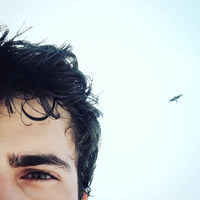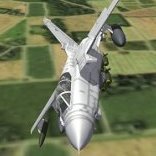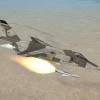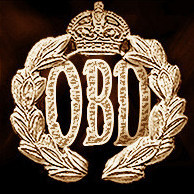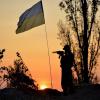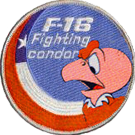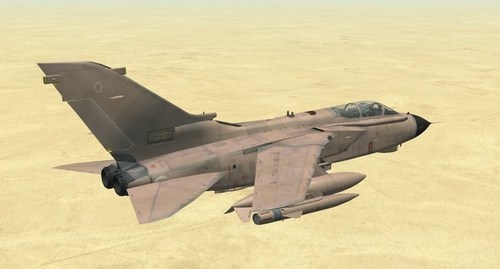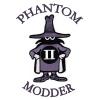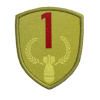Leaderboard
Popular Content
Showing most liked content on 01/04/2024 in all areas
-
12 pointsI once saved a campaign generated mission of the ODS 30AE mod and discovered that it somehow assigned a Transfer (not Transport) mission to a cargo plane. After further investigations, it seems it's a valid mission type that can be assigned to AI-only aircraft in ThirdWire's Mission Editor. Just add Transfer to the roles of the aircraft in its data.ini file, and it'll appear in the Mission Editor. I don't know the exact differences between Transport and Transfer, but on the campaign generated mission it seemed to make the aircraft take-off from one airport and land on another. I want to reiterate that this is an AI-only mission type, so it won't appear for the player, regardless of the aircraft type.
-
7 points
-
3 points
-
3 points
-
2 pointsMaybe we should make a list of all valid mission types for all aircraft
-
1 pointdont forget tankers, as a common mission is fighter drags; escorting a set of up to half dozen tactical aircraft across either ocean and keeping them gassed up
-
1 pointNope, these others don't seem to work, they do not appear in the mission editor at least.
-
1 point
-
1 pointActually not, not needed, just for info. What is needed is to avoid two sections "SystemType=WEAPON_STATION" with the same "StationID" number.
-
1 pointYes we have thought many times about new engines. One or two promising avenues never came good. It is what it is right now - plus there's only 2 of us working on the whole thing so not an easy task.
-
1 pointNorth American F-109A Retaliator Development of the North American A3J-1 Vigilante progressed well during the late 1950's and the first flight of the YA3J-1 prototype in August 1958 revealed it to be a real thoroughbred, packed from nose to tail with outstanding technology. However, a strong faction against the Vigilante was forming within the USN arguing that strategic bombing was not part of the USN's business and North American decided not to assume that large orders for the 'basic' A3J-1 would follow and they began to look at other roles for the Vigilante. One line of development would eventually lead to the reconnaissance Vigilante (RA-5C) but another line of development transformed the A3J-1 into various fleet defender and ADC fighter options. Fortunately, the wing of the A3J-1 was designed for zero wind over deck launches and this resulted in a wing too large for low-level attack missions but ideal for a fighter. During early 1959 North American offered a long-range fighter version to the USN and USAF but had only a lukewarm response. However, following the cancellation of their F-108 Rapier in September 1959 things now became a bit more urgent for North American and they schemed a revised A3J-1 Fighter with uprated J79 engines and semi-recessed Sparrow missiles. Trying again in 1960 they received a firm no from the USN (who by then knew they had a winner in the F4H-1 Phantom II) but the USAF agreed to a detailed analysis of an optimsed land-based interceptor fighter (named Retaliator in May 1960) and in June 1960 they announced that the Retaliator was to be ordered as an immediate follow-on to the F-106 programme with 350 ordered although this figure was later reduced to 240. The prototype YF-109 flew on April 30th 1962 and production F-109A's entered service in late 1964 with the 5th Fighter Interceptor Squadron at Minot AFB, North Dakota. The only export order was from Canada who ordered 60 in 1968 and these entered service with No.409 squadron in 1969 remaining in service until 1990. 3D Model & template Credit: Julhelm
-
1 point
-
1 pointGuys, no one here has committed an infraction, it is unfortunate that they are distancing themselves just to defend ideas and outside others who have committed an infraction do not care what is happening here... @Menrva, @daddyairplanes, @bazillius, you are valuable, I don't know get angry just for presenting different positions...Bazillius has not promoted anything against CA, I only see that he renounces claiming ownership of his work (he does not want to worry about that) and that is his right. ...the rest of the opinions are subjective and we can agree or not but they are only our opinions... please do not marginalize your joint projects. unity is strength... we also have different nationalities with our ways of speaking and expressing ideas here standardized to english, which does not always faithfully interpret what we want to say in verbal language... so let's not take it literally at all, Happy new year guys, may this year be fruitful here and in your private life and I reiterate my admiration and respect for each of you.
-
1 point
-
1 point
-
1 pointHappy New Year Luftwaffe F-4F Phantom over a wintry Germany , good old times
-
1 point
-
1 pointWhile not publicly shown, the previous release of ODS 30AE offered reworked hit boxes and collision points for all of the over 140 aircraft of the mod; some aircraft required major fixes, others only needed small improvements. Referenced model node names have also been corrected in many cases. This (boring and time-consuming) work improves the hit detection of bullets and missiles and of crashes into the ground; overall it puts all of the aircraft of the mod on par with each other, for quality consistency's sake. Another detail that is often neglected regards landing lights. After several days of work, I'm happy to announce that the next release of the mod will offer standardized brightness and range values of landing lights for all of the flyable aircraft of the mod (not player-flyable aircraft will get the same treatment at a later time). Previously, many aircraft were missing landing lights or had broken values that caused rendering issues of landing lights. Each of the over 80 flyable aircraft (sub-variants included, not counting AI-only sub-variants that were also fixed) has been tested carefully to make sure that quality consistency on landing lights is kept throughout the entire roster of aircraft.
-
1 pointMy extended thanks to @yakarov79, @guuruu, @daddyairplanes, @GKABS, @Jimbib, @ravenclaw_007, @ludo.m54, @dtmdragon, @Crusader, @Coupi, @paulopanz, @TaktischesGenie, @simonmiller416, @pvince and @swambast for supporting me and the mod during its latest development. The year 2023 has been bitter for some members of CombatACE.com and it is marked by the sad loss of dear Marty ‘NIELS’ Nielsen. I send the CombatACE.com community all my heartfelt thanks and best wishes. The release of the mod is going to be dedicated to the memory of 'NIELS', who has been one of the major beta testers of the ODS 30AE mod before it got its official public release. Blue skies and tailwinds…
-
1 pointJournal of FCdr Douglas Bell-Gordon, DSC 9 Squadron, RNAS Part 24 3 November 1917. Bray Dunes, France. "The Hun began to fall and just then Redgate’s Camel came between me and it." As October progressed, the enemy became ever more bothersome in our sector. They preferred to fight us over their own side of the lines by day, but by night they would send raiders to attack our aerodromes. The fields around Bray Dunes were hit frequently around this time. We dug slit trenches outside our cabins. These we improved over time by adding more sandbag protection and deep dugouts with overhead cover. Some of the fellows, perhaps most of them, have begun sleeping in those dugouts. For my own part I prefer the warmth of my cot to the safety of our dugout. Still, every few nights the Huns leave us with cratered fields and occasionally with a burning shed or building. Our French neighbours have lost their other ranks’ mess and the nearby Belgian squadrons have had a number of machines destroyed. On 15 October, the Huns came over shortly after nine in the morning. I was one of several pilots who were hanging about the sheds and therefore able to get airborne at the first alert. Without waiting for the others I climbed away sharply as soon as the wheels left the ground. Grey puffs from friendly Archie showed the way. About a half-dozen enemy two-seaters were lazily circling above Bray Dunes, taking turns lining up on the rows of hangars below. It took me a while to reach them. They were up around 10,000 feet. I selected one machine that stood slightly farther from the others and began to stalk it. Unfortunately, the other EAs spotted me and fired from long range, alerting my prey. The Hun – it was a Rumpler – got the wind up and turned for home. This move necessitated a dangerous pursuit, one in which I could close the range only slowly. As much as I attempted to stay in the enemy’s blind spot, his gunner was periodically able to fire bursts in my general direction. This reminded me how much I disliked attacking two-seaters by myself. I held fire until I was about 200 yards behind and just below the Rumpler. My first burst scored some hits and the enemy pilot seemed rather disconcerted. He threw his machine into a downward right-hand spiral. This was lovely for two reasons. First, it forced the enemy observer/gunlayer to abandon his weapon in favour of holding on for dear life. And second, it allowed me to attack the Hun machine from above. The Rumpler has always seemed more fragile than the other larger enemy machines. This time was no exception. I fired a burst of ten or fifteen rounds from each Vickers and saw pieces of the upper wing fall away. The Hun began to fall and just then Redgate’s Camel came between me and it. I banked into a near-vertical dive and flashed past Redgate to finish off the Hun with one last burst. The Rumpler fell about four miles north-east of Bray Dunes. When I landed, several of the lads went with the squadron commander’s car to find the wreckage. I wasn’t up for the trip, so I asked them to get a piece of fabric for the wardroom wall. The Rumpler brought my account up to 22 confirmed victories, one more than my old pal Huntington had claimed, only my score and lacked his degree of imagination. We flew offensive patrols for the next few days, most of which were uneventful. We had a good scrap with some Albatri on 18 October and I sent one down in a spin but could not see whether it recovered. On 20 October, however, things were more eventful. That day we conducted a close offensive patrol. This sort of patrol keeps close to the front and just behind the enemy lines. It was towards the end of our time and we were re-crossing the lines when we encountered three Hun two-seaters heading east. I immediately attacked one of the two machines at the rear of their little formation but was driven away by an energetic and accurate gunlayer. Brown led two of his boys against the fellow. They seemed to do no damage. I had regained altitude and was trying a beam attack when the enemy gunner swung his weapon about and caught me with his welcoming burst. One round smashed into my left Vickers and a piece of metal – I’m not sure whether it was part of the round or part of my machine-gun – sliced open my left jaw. It bled horribly and I confess that I was awfully upset at the thought that it had terribly disfigured me. I landed at the field near Nieuport and was carted off to a French casualty clearing station. From there I was taken to the Queen Alexandra Hospital at Dunkirk. It turned out that the injury was not at all serious and would leave only a rather dashing thin scar. It provided me with a week’s rest at a time when it was most welcome. I had a number of visitors during my stay, many of my chums from Naval Nine and several from other nearby squadrons. Greaves from 12 Squadron dropped by and we spent a pleasant couple of hours. I’d met him only once during my training and once as a guest at Leffrinckoucke. His sister was a VAD here at the hospital. I returned to duty on 28 October and led a defensive patrol down to Bailleul. On our return, we explored a bit of the front at the salient. The fighting near Ypres has gone on since the summer. The place is a perfect vision of hell. For miles around nothing recognisable remains. Roads are drowned in mud. Former villages are marked only by a more reddish taint of mud. Shell hole abuts shell hole, and all are filled with vile green sludge. The constant explosions and occasional gun flashes betray the presence of men, but the men and the mud are indistinguishable one from the other. The Anzacs have given the enemy a good going over. The ridge near the smashed village of Passchendaele remains to be conquered before winter comes, and the Canadian Corps has been moved into the sector to do the job. You can be proud to be Canadian these days. Our boys did a splendid job at the end of the summer down near Lens and, on top of the Vimy Ridge fight in the spring, are making quite the reputation for themselves. Perhaps I have that reputation to thank for the conversation I had this afternoon with Squadron Commander Norton. He has informed me that I am to be awarded the Distinguished Service Cross for success in air fighting. It will be gazetted later this week, but I was told to put up the ribbon right away. The greatest news, however, was that he has put my name forward for home leave. I can expect to get at least two or three weeks in Canada and should receive news of when I go before the end of November! As much as I am a terrible correspondent, I immediately wrote home to the parents and have begun to think about what I can bring as Christmas presents. I cannot lie to myself. The leave is most welcome. I feel very tired and for the first time have begun to worry about my nerves holding out. A little break from more and some peace and quiet back in Halifax will be most welcome.
Important Information
By using this site, you agree to our Terms of Use, Privacy Policy, and We have placed cookies on your device to help make this website better. You can adjust your cookie settings, otherwise we'll assume you're okay to continue..

